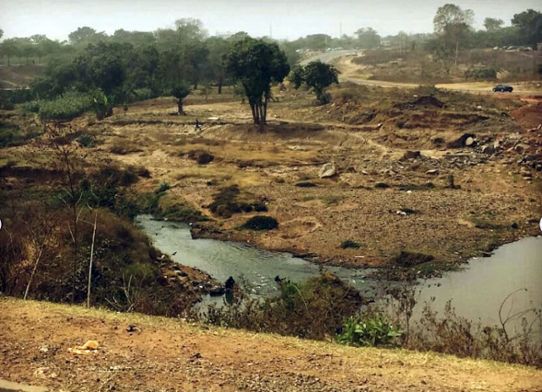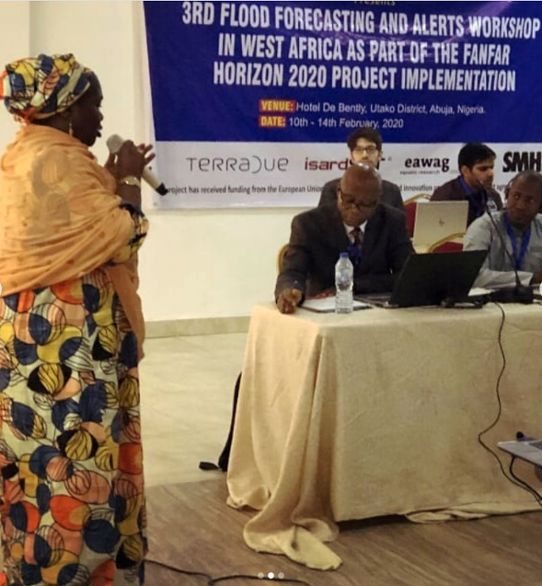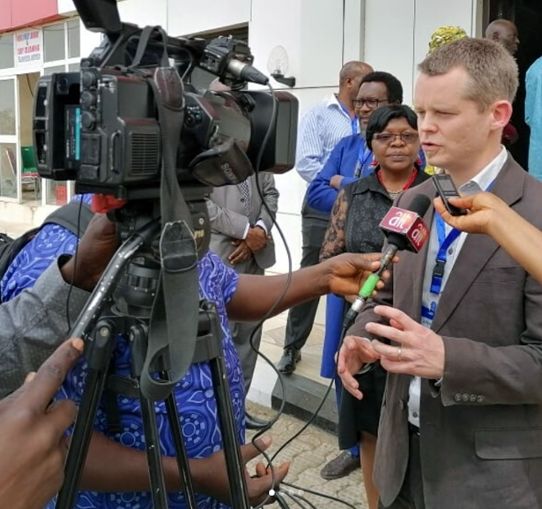
Jafet Andersson from SMHI's hydrological research unit is the coordinator of the EU-funded FANFAR project. He says that SMHI is a valued partner in international projects like this.
"Our strength is to produce solid research results and to put them into an operational production chain – an "engine" – that generates benefits for the society."
In West Africa, flooding is a rapidly growing problem. Previously, the main problem was drought, but in recent years several major floods have occurred with severe consequences including loss of lives, displacements, disruption to public services, destroyed homes, damaged infrastructure, and delayed transportation.
"During the workshop, we visited a place in Abuja where the water rose several meters after an intense rainfall event. People tried to rescue themselves by climbing the trees but perished as the water continued to rise. A motorist was also caught by the water and drowned", says Jafet Andersson.
Urgent need for improved flood management
Climate change also increases the risk of flooding. Therefore, there is an urgent need for improved flood management.
In the FANFAR project, seventeen countries from West and Central Africa cooperate with European partner countries such as Italy, Spain, Sweden and Switzerland. The aim is to improve the capacity of West African institutions to forecast, alert for and manage floods. A key to this is co-operation, where each partner contributes with their knowledge and experience.

One example is Aishatu Ibrahim and Fashe Adam from Nigeria's hydrological authority NIHSA that held a very successful session on gender within the field in West Africa. Another example is when SMHI and the West African regional institute AGHRYMET trained other participants to use FANFAR's portal for flood forecasts. Through the workshops, we collect feedback from both hydrologists and crisis management authorities to develop the system so that the information can reach the persons that are in need of it.
New resources needed to take the next step
The need for flood information is urgent, which was confirmed by the great interest of both authorities and media. The Swedish Ambassador in Nigeria, Carl Michael Gräns, and representatives from the EU delegation to Nigeria and ECOWAS participated in the opening of the workshop. This resulted in a number of articles in local newspapers, and was also featured in a nationwide TV channel's evening news.
"We do not have enough forecasts to prepare action before the event comes. We need to push effort now to be able to provide information before the crisis comes, so that we can act and be more efficient", says Abdou Ali, Head of Research at AGRHYMET.
FANFAR is funded through a three-year Horizon 2020 project (Grant Agreement No. 780118) that will end in 2020. However, the societal need remains very large, and based on the project's good results new long-term funding is now being sought.

"FANFAR is the result of a targeted cooperation over the past 10 years. Now we need new resources in order to take the next step toward the vision that West African institutions with national and regional mandate shall lead, operate and refine their own operational flood forecasting and alert system", says Jafet Andersson.